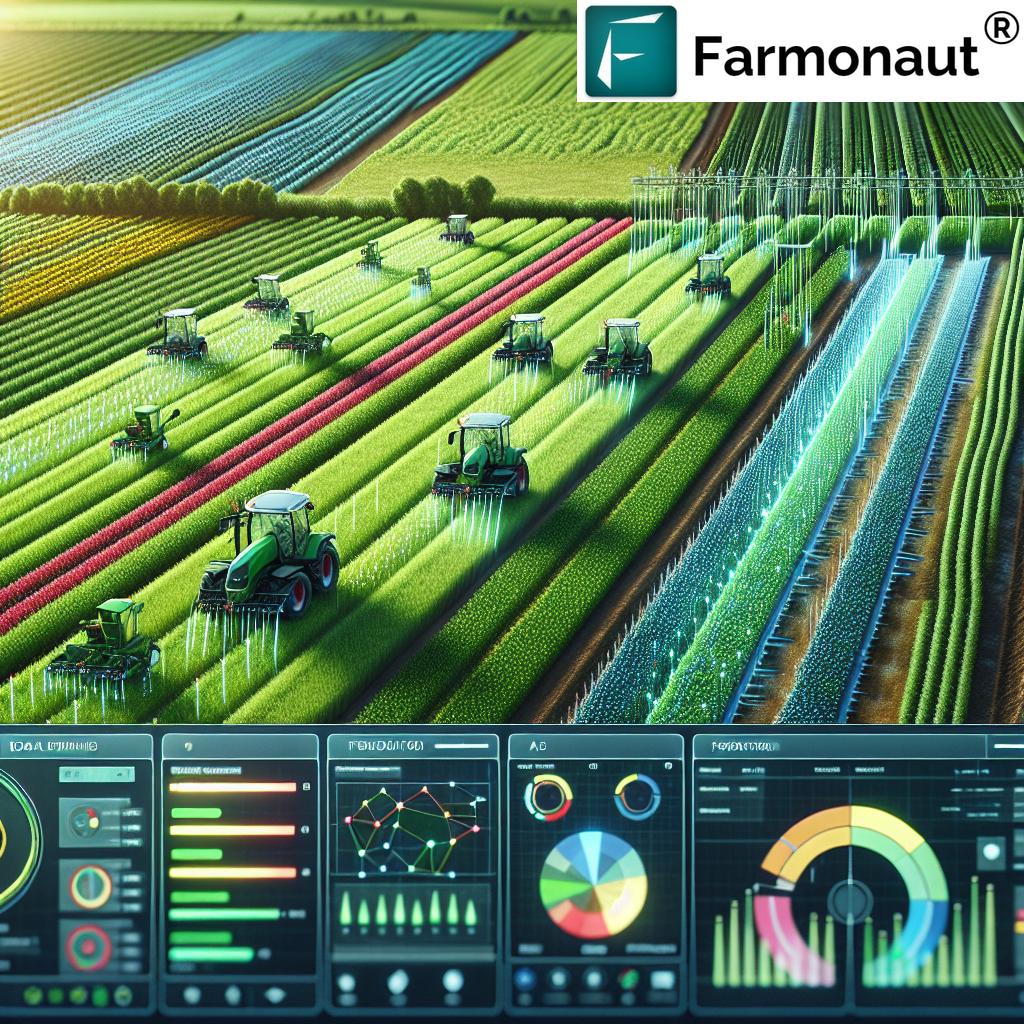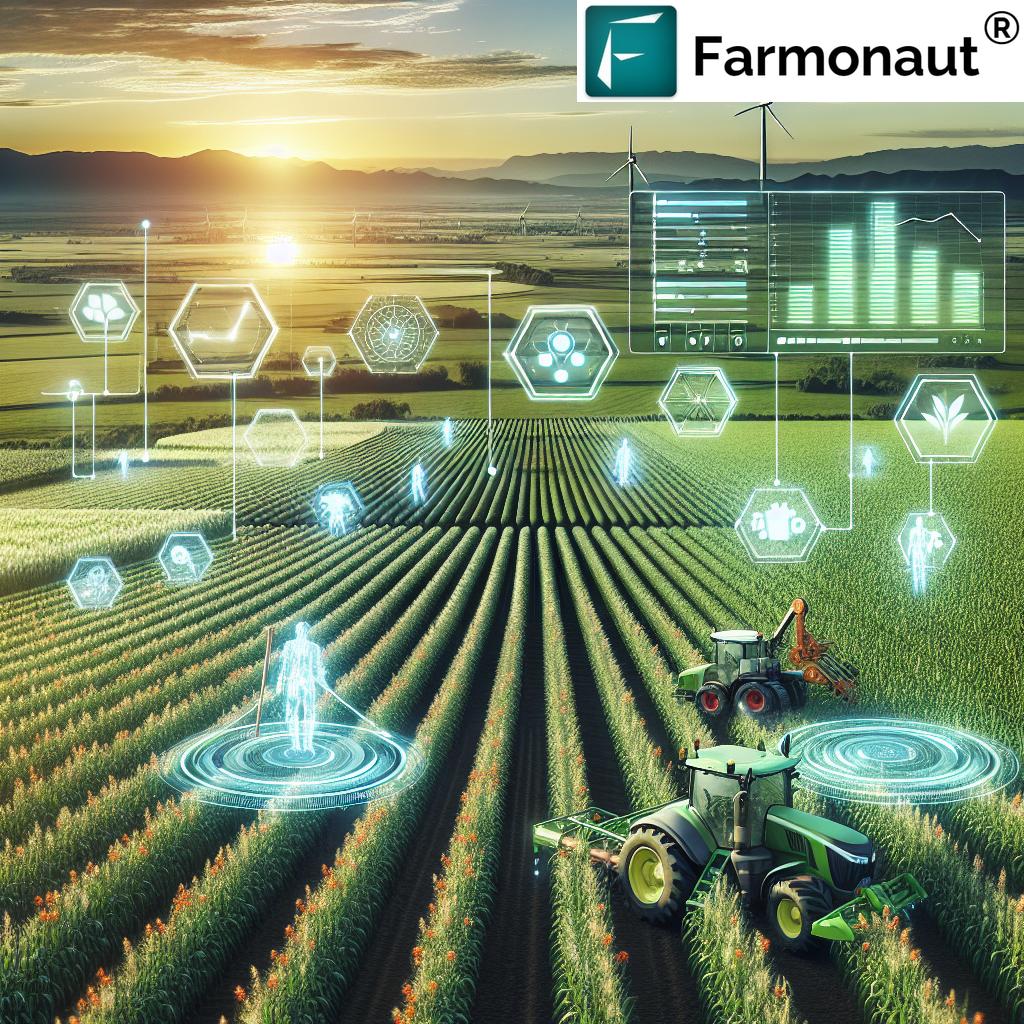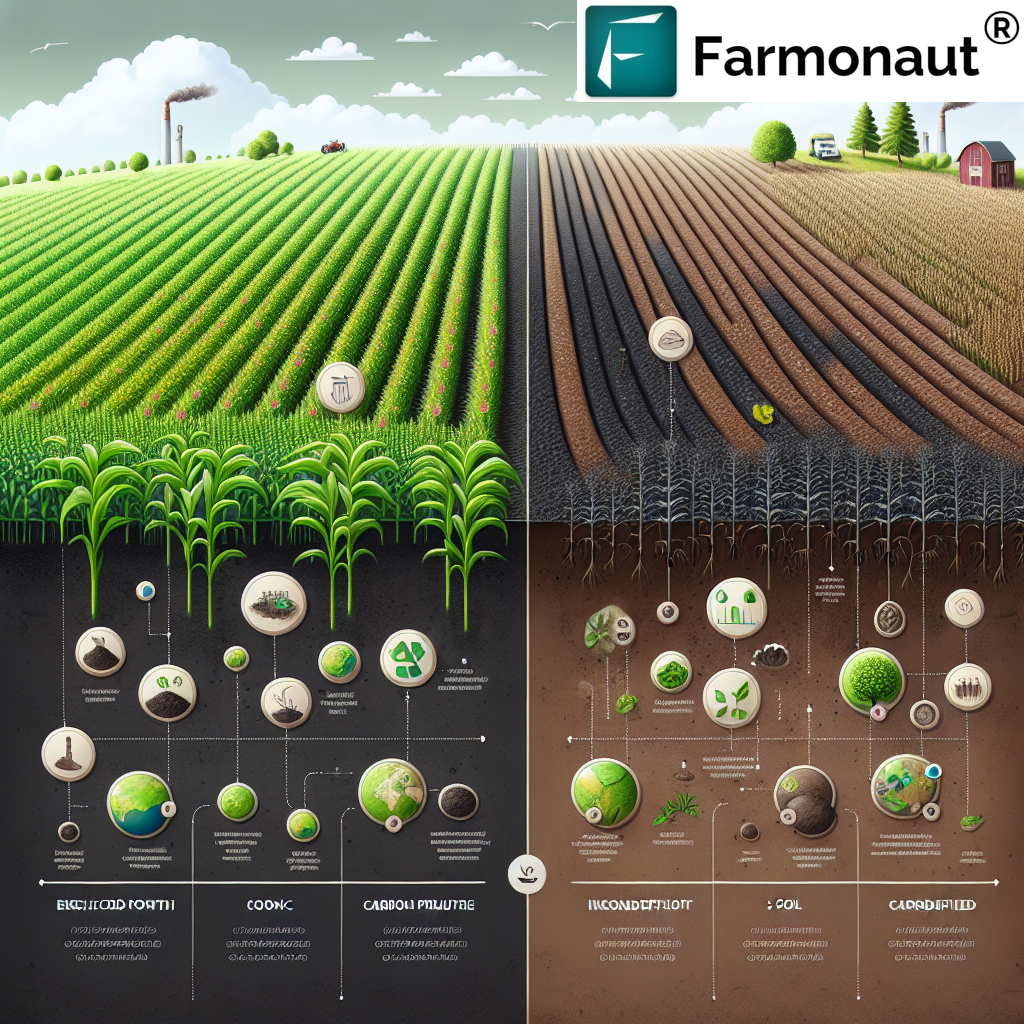AI and Machine Learning in Agriculture: 2025 Playbook
Summary: Machine learning (ML) has matured into a practical, high-impact tool for agriculture by 2025, accelerating productivity, sustainability, and resilience. The most impactful applications of machine learning in agriculture include precision crop management, pest and disease detection, yield forecasting, soil and water optimization, breeding and phenotyping, autonomous machines, and supply-chain forecasting. Remote sensing and imagery-driven ML are now central, while edge AI enables real-time insights where connectivity is limited.
Primary focus keyword: ai and machine learning in agriculture
“In 2025, remote sensing ML uses 13 spectral bands at 10–20 m resolution to quantify crop vigor.”
Table of Contents
- AI and Machine Learning in Agriculture: 2025 Snapshot
- Remote Sensing, Edge AI, and Connectivity
- Yield Forecasting and Crop Modeling
- Pest, Disease, and Plant Health Intelligence
- Breeding, Phenotyping, and Genomics
- Autonomy, Robotics, and Predictive Maintenance
- Supply Chains, Grading, and Market Forecasting
- Adoption Enablers, Responsible AI, and Standards
- The Practical 2025 Playbook: ROI, Stacks, and Use‑Case Impact
- How Farmonaut Supports the 2025 Playbook
AI and Machine Learning in Agriculture: 2025 Snapshot
The field of ai and machine learning in agriculture has matured rapidly. In 2025, applications of machine learning in agriculture are not just pilots; they are production systems improving crop management, water and nutrient optimization, pest detection, disease forecasting, and yield prediction. These models combine remote sensing imagery with IoT sensors, farmer records, and weather feeds to produce timely insights at field scale. The application of machine learning in agriculture spans precision agronomy, breeding and phenotyping, autonomous machines, and supply-chain planning. With better data, ml learning pipelines deliver higher accuracy and lower costs, while robust validation and explainable approaches build trust among growers.
Several advances stand out as the central drivers of productivity, sustainability, and resilience:
- Remote sensing at 10–20 m resolution from satellite, high-resolution UAV, and ground cameras, processed by convolutional networks and transformer architectures, detects nutrient deficiencies, water stress, early disease outbreaks, and lodging.
- Edge AI (TinyML) deployed on drones, sensors, and tractors issues alerts in the field where connectivity is limited.
- Yield forecasting and modeling use temporal transformers and RNNs to combine weather, soil, and management records, producing probabilistic estimates and integrating climate projections.
- Pest and disease detection benefits from few-shot classifiers trained on curated datasets, while generative approaches synthesize rare images to augment model training.
- Autonomous machines, navigation, and weeding use reinforcement learning and sensor-fusion; predictive maintenance on equipment telemetry reduces downtime.
- Federated learning, open APIs, explainable AI, and agronomic systems integrations are scaling adoption.
This playbook focuses on practical steps to include AI into field operations, linking precision management with ROI and sustainability goals, and highlighting deep learning applications in agriculture that are ready now.
Remote Sensing, Edge AI, and Connectivity
Imagery-driven ML is the central pillar of ai and machine learning in agriculture in 2025. Multispectral and hyperspectral satellite feeds provide continuous coverage at 10–20 m; UAV drones deliver sub-centimeter detail; and ground cameras, LiDAR, and in-field sensors capture micro-variability. These inputs are processed by convolutional neural networks, spatio-temporal transformers, and segmentation models to detect nutrient deficiencies, stress, canopy gaps, and early disease signals.
From Indices to Pixel‑Level Semantics
- Traditional indices (NDVI, NDRE, NDWI) are now augmented with pixel-wise segmentation and change detection to enable site-specific fertilization, irrigation, and tissue sampling.
- Field-scale maps guide variable-rate applications, reducing inputs and environmental runoff while preserving yield.
- Spatio-temporal modeling fuses remote sensing with weather to separate stress causes (e.g., drought vs. disease vs. nitrogen).
Edge AI Where Connectivity Is Limited
Bandwidth remains uneven in rural regions. That is why edge AI is a critical tool in 2025. TinyML models run on low-power microcontrollers in traps, meters, and sprayers; they produce immediate alerts without backhaul. A modern farm now often combines deployed on-device inference with periodic cloud sync for fleet-level analytics.
- On‑drone weed and pest detection supports row-by-row interventions.
- Soil moisture probes infer irrigation zones locally and supports valve actuation.
- Canopy stress detection on combine harvesters adapts speed and clearance to reduce loss.
Data Fusion for Robust Decisions
Combining imagery with IoT observations increases accuracy and resilience:
- Fusion of multispectral, SAR (for clouds), and thermal with in-situ moisture delivers reliable irrigation maps.
- Self-supervised and transfer learning reduce labeled-data demands, improving performance in new regions with minimal re-training.
- Explainable overlays, confidence bands, and agronomic rules (e.g., phenology-aware thresholds) improve validation and adoption.
Yield Forecasting and Crop Modeling
By 2025, prediction models for yield are accurate enough to drive contracts, insurance pricing, and input procurement. Time-series ml (RNNs, temporal transformers) combine vegetation indices, weather histories, soils, and management records to produce probabilistic estimates of harvest. These models also integrate climate projections to guide planting decisions and crop mix.
Key Elements of 2025 Yield Models
- Feature pipelines: Phenology-aware rolling windows, drought/heat stress indices, soil-texture embeddings, and management markers (planting date, hybrid).
- Uncertainty quantification: Quantile regression, Bayesian heads, or ensemble spread expose risk bands used in insurance and hedging.
- Spatial transfer: Transfer learning and domain adaptation re-use learned dynamics across regions.
- Operational outputs: Per-field and per-zone forecasts with error bars support harvest logistics and sales commitments.
From Forecasts to Action
- Harvest timing: Predicting moisture and maturity aligns equipment and labor.
- Input optimization: Targeted topdressing and growth regulator applications based on biomass trajectories.
- Financial planning: Forward contracts and insurance portfolios calibrated to probabilistic outcomes.
“Edge AI evaluates 10 m pixels on-device, producing per-hectare pest-risk scores without cloud dependence.”
Pest, Disease, and Plant Health Intelligence
Few issues hurt farm productivity more than pest and disease outbreaks. In 2025, deep classifiers and segmentation models, trained on curated image datasets, flag symptoms at leaf and canopy levels. Generative approaches synthesize rare images to augment scarce classes, improving early detection for uncommon pathogens.
Modern Detection Pipelines
- Leaf-level mobile capture: Lightweight CNN/Transformer classifiers recognize disease and pest signatures offline.
- Canopy-level mapping: Drone orthomosaics and satellite scenes detect change and spread patterns.
- Decision-support: Model outputs are coupled with IPM rules to suggest targeted pesticide application or biological controls, cutting costs and slowing resistance development.
Best Practices for Accuracy and Trust
- Local validation: Benchmark on local cultivars and environment to avoid bias from global datasets like PlantVillage.
- Explainable overlays: Heatmaps and saliency help agronomists verify symptoms, improving farmer confidence.
- Active learning: Field feedback loops add hard examples, improving season-over-season performance.
Breeding, Phenotyping, and Genomics
In plant breeding, genomics, and high-throughput phenotyping, ml is used to accelerate selection and improve stress tolerance. Predictive models link genotype, phenotype, and environment. Active learning prioritizes crosses and experiments, shortening cycles and boosting genetic gain per year.
- Using LiDAR and computer vision, robotics traverse trials to measure plant traits (height, tiller count, canopy density) automatically.
- Trait discovery uses embeddings that connect multi-omics, field stress events, and yield outcomes.
- Cross-environment modeling separates G×E interactions, guiding placement decisions across tropical and temperate zones.
Autonomy, Robotics, and Predictive Maintenance
Field automation scaled in 2025. Navigation and obstacle avoidance rely on sensor-fusion (GNSS/RTK, LiDAR, cameras) and reinforcement learning. These autonomous machines support tillage, irrigation checks, targeted spraying, and selective harvesting. On the maintenance side, supervised and anomaly-detection models trained on equipment telemetry detect bearing wear, hydraulic drift, and filter clogging.
- Weeding robots: On-device computer vision automates in-row control to reduce herbicide and labor.
- Harvesters: Load detection and fruit maturity classification optimize throughput and reduce losses.
- Predictive maintenance: Signal models raise alerts minutes to days before failure, minimizing downtime and costs.
Supply Chains, Grading, and Market Forecasting
Beyond the field, applications of machine learning in agriculture transform logistics and quality control. Computer vision automates sorting and grading, while time-series models forecast demand and price. Cold-chain routing optimizes trips based on perishability and traffic, reducing post‑harvest loss.
- Quality grading: Image-based classifiers score color, size, surface defects, and uniformity with high repeatability.
- Logistics optimization: Routing engines integrate predicted harvest windows and cold-chain availability to cut waste.
- Market forecasting: Models incorporate macro-weather, planting area, and seasonality to estimate prices and volatility.
Adoption Enablers, Responsible AI, and Standards
Scaling ai and machine learning in agriculture requires more than algorithms. Governance, privacy, and support structures matter.
Enablers in 2025
- Federated learning and privacy-preserving methods allow vendors and cooperatives to train without centralizing sensitive farm data.
- Multimodal foundation models and agricultural LLMs power conversational advice, synthesizing satellite, sensor, and weather signals.
- Explainable AI combined with agronomic systems increases trust among growers and advisors.
- Open standards for data interoperability reduce vendor lock-in and speed integration.
Challenges and Responsible Deployment
- Heterogeneous, biased, and siloed data can mislead models; local validation is essential.
- Limited connectivity and compute on smallholder farms make edge approaches critical.
- Regulatory, liability, and ethical concerns call for transparent performance metrics and human-in-the-loop workflows.
- Interfaces must respect culture, language, and literacy levels; extension services remain crucial.
The Practical 2025 Playbook: ROI, Stacks, and Use‑Case Impact
Implementation hinges on a practical pathway that shows ROI across farm sizes. Below is a sequence to include AI safely and profitably.
Step‑By‑Step Adoption
- Start with remote sensing: Baseline variability using satellite and optional UAV surveys (NDVI/NDRE, canopy temperature).
- Layer field sensors: Add low-cost soil moisture and micro‑weather sensors for calibration; set up fusion with imagery.
- Deploy edge AI: Run TinyML traps and vision on drones/tractors for pest and weed detection in zones with limited connectivity.
- Introduce forecasting: Use RNNs/temporal transformers for yield prediction and disease risk maps; expose probabilistic outputs.
- Automate decisions: Tie maps to variable-rate fertilization, irrigation, and scouting routes; log actions for feedback.
- Scale with governance: Adopt federated learning, robust QA/QC, and open APIs to maintain portability.
Implementation Stack and Resources
- Frameworks: TensorFlow, PyTorch; deployment via ONNX, TensorRT; edge on Jetson, Coral, and microcontrollers for TinyML.
- Data sources: Multispectral/hyperspectral, SAR, thermal; weather; soils; in-field sensors; management records.
- Open datasets: PlantVillage (leaf-level); Sentinel, Landsat; phenotyping repositories.
- Reading & PDFs: Many organizations publish a “machine learning in agriculture pdf” for practitioners; look for current editions with edge and transformer coverage.
Use‑Case Impact Comparison Table: AI and Machine Learning in Agriculture (2025)
Click headers to sort by impact, cost, or latency. Caption: A 2025 scan of precision applications, primary technology, estimated performance, costs, and ROI to guide adoption of deep learning applications in agriculture and related systems.
| Use Case | Primary Technology | Data Inputs | Farm Segment | Estimated Yield Uplift (%) | Pest/Disease Detection Accuracy (%) | Estimated Decision Latency | Estimated Cost per Hectare (USD) | Estimated ROI Payback (months) | Sustainability Impact | Implementation Complexity | Regional Fit | 2025 Maturity | Notes |
|---|---|---|---|---|---|---|---|---|---|---|---|---|---|
| Variable‑Rate Fertilization | Remote Sensing (satellite/UAV); CNN/transformer segmentation | Multispectral, SAR (cloudy), soil maps | Mid/Enterprise | 5–15 | — | Hours | 4–12 | 6–18 | Inputs −10–20%; runoff ↓ | Medium | Tropical/Temperate | Production | Assumes calibrated soil zones; imagery quality seasonal. |
| Irrigation Optimization | Edge AI + Remote Sensing; temporal transformers | Thermal, NDWI, weather, soil moisture | Smallholder/Mid/Enterprise | 5–12 | — | Minutes–Hours | 2–8 | 6–12 | Water savings 10–25% | Medium | Tropical/Temperate | Production | Edge inference used where connectivity is limited. |
| Pest Scouting | Edge AI vision on drones/phones; few‑shot learning | RGB, multispectral; trap counts | Smallholder/Mid | 3–8 | 80–95 | Minutes | 2–6 | 6–12 | Pesticide use −8–15% | Low–Medium | Tropical/Temperate | Production | Accuracy depends on curated datasets; local validation required. |
| Disease Forecasting | Temporal transformers; hybrid epidemiological ML | Weather, canopy indices, spore counts | Mid/Enterprise | 4–10 | 85–95 | Hours | 3–9 | 8–16 | Inputs −10–18% | Medium | Tropical/Temperate | Production | Risk maps tied to targeted application/biological controls. |
| Yield Prediction | RNNs/temporal transformers; Bayesian heads | Multispectral, weather, soil, management | Mid/Enterprise | — | — | Hours | 2–6 | 6–18 | Enables better planning and reduced waste | Medium | Tropical/Temperate | Production | Probabilistic estimates help insurance pricing. |
| Harvest Timing | Time‑series ML with canopy temperature | Thermal, weather, phenology | Mid/Enterprise | 2–6 | — | Hours | 2–5 | 6–12 | Reduces losses, fuel, and rework | Low–Medium | Temperate | Production | Assumes accurate maturity proxies. |
| Carbon Monitoring | Remote sensing + process‑ML fusion | Multispectral, SAR, ground truth | Mid/Enterprise | — | — | Weeks | 3–7 | 12–24 | Supports regenerative practices | Medium–High | Tropical/Temperate | Pilot–Production | Verification standards evolving; periodic audits required. |
How Farmonaut Supports the 2025 Playbook
As a satellite technology company, we provide advanced, satellite-based solutions to make AI and machine learning in agriculture accessible and affordable. We deliver real-time monitoring, AI-based advisory, blockchain-based traceability, and resource management via Android, iOS, web apps, and APIs. We focus on integrating innovative technology and data-driven solutions, so growers, businesses, and governments can scale productivity, sustainability, and resilience.
Our Core Technologies
- Satellite-Based Monitoring: We use multispectral imagery to map vegetation health (NDVI), soil conditions, and field variability for precision management. This supports variable-rate fertilization, irrigation scheduling, and timely scouting.
- Jeevn AI Advisory System: We deliver real-time insights, weather forecasts, and tailored strategies by analyzing satellite signals and on-field events, improving prediction and decision-making.
- Blockchain-Based Traceability: We enable transparent supply chains in agriculture with secure traceability from field to market.
- Fleet and Resource Management: We optimize logistics, vehicles, and equipment usage to reduce costs and downtime.
- Environmental Impact Monitoring: We track carbon footprint and resource use to support sustainability goals and compliance.
Try Our Apps and APIs
- Farmonaut API: Integrate satellite insights into your systems for monitoring and alerts.
- Developer Docs: Learn how to authenticate, query imagery, and combine weather with field analytics.
Explore Focused Solutions
- Carbon Footprinting: Measure and manage emissions using satellite-derived indicators to support regenerative practices and reporting.
- Traceability: Use blockchain-backed records to ensure authenticity and quality from field to retail, improving market trust.
- Crop Loan and Insurance: Satellite-based verification assists lenders and insurers, reducing fraud and enabling timely financing.
- Fleet Management: Optimize vehicle routing and asset utilization across fields to improve efficiency and safety.
- Large-Scale Farm Management: Coordinate multi-farm oversight with mapping, tasking, and reporting in a single dashboard.
- Crop Plantation & Forest Advisory: Access advisory layers for crop and forestry decisions powered by satellite analytics.
FAQ: AI and Machine Learning in Agriculture (2025)
- Q: What are the most proven applications of machine learning in agriculture?
A: Remote sensing–driven crop management, pest/disease detection, variable-rate nutrient and water optimization, yield forecasting, and quality grading are widely in production. - Q: How do models perform under limited connectivity?
A: Edge AI on devices handles on‑site alerts and classification; periodic sync pushes summaries when networks allow. - Q: How is ROI measured?
A: Common metrics include input reduction, water savings, labor efficiency, detection accuracy, decision latency, and estimated payback months. - Q: What about data privacy?
A: Federated learning and clear governance policies protect farmer data while enabling collective accuracy improvements. - Q: Are there resources like a “machine learning in agriculture pdf” to start?
A: Yes. Look for updated 2025 guides covering remote sensing, edge deployment, and temporal transformers with practical tutorials.
Deeper Dive: Technical Notes for Practitioners
For teams building deep learning applications in agriculture, several patterns consistently deliver robust performance and portability in 2025.
Modeling Patterns
- Convolutional backbones with transformer heads: Hybrid architectures capture local texture and long-range dependencies in imagery.
- Temporal transformers for per‑pixel time series encode phenology and weather impacts, improving yield and disease forecasts.
- Few-shot learners and generative image augmentation help with rare pests and rare disease classes.
- Self-supervised learning on unlabeled seasons reduces training data demands and boosts out-of-region generalization.
Data and Feature Engineering
- Cloud-robust pipelines: Mix multispectral with SAR to avoid data gaps; propagate uncertainties forward.
- Soil and topography embeddings support zone delineation and nutrient response modeling.
- Weather extremes indicators (heat, VPD, frost) are vital features for risk maps and prediction.
Deployment and MLOps
- ONNX export and TensorRT speed-up for edge and cloud; prune and quantize for TinyML on microcontrollers.
- Model validation best practices: season holdouts, cross-region tests, and agronomy expert review loops.
- Systems approach: couple ML with process-based crop models for digital twins and what-if scenarios.
Policy, Extension, and Equitable Access
Enduring impact in 2025 and beyond requires aligned incentives and capacity building.
- Public–private support for sensors and training lowers barriers to entry for smallholders.
- Extension services integrate ML outputs into day-to-day workflows, ensuring practical usage rather than shelfware.
- Standards for data interoperability and model validation improve vendor portability and reduce integration costs.
- Transparent metrics on accuracy, latency, and ROI guide scaled investment.

Explore our API |
Developer Docs
Closing Summary: The Road Ahead
As of 2025, ai and machine learning in agriculture have clearly matured from experimental to operational. The key leverage points are remote sensing, edge AI for limited connectivity, and time-series modeling for yield and disease prediction. When combined with rigorous validation, transparent systems, and strong extension support, these applications deliver measurable gains in productivity, sustainability, and climate resilience. Open datasets, portable deployment stacks, and careful attention to governance ensure that benefits reach farms of every size. With continuous improvements in models, data quality, and on-device efficiency, the next seasons will further expand real-time decision-making at the field scale.
For readers collecting resources, consider curated “machine learning in agriculture pdf” guides that cover end-to-end workflows—include sensing, convolutional backbones, temporal architectures, phenotyping, and autonomous robotics.










